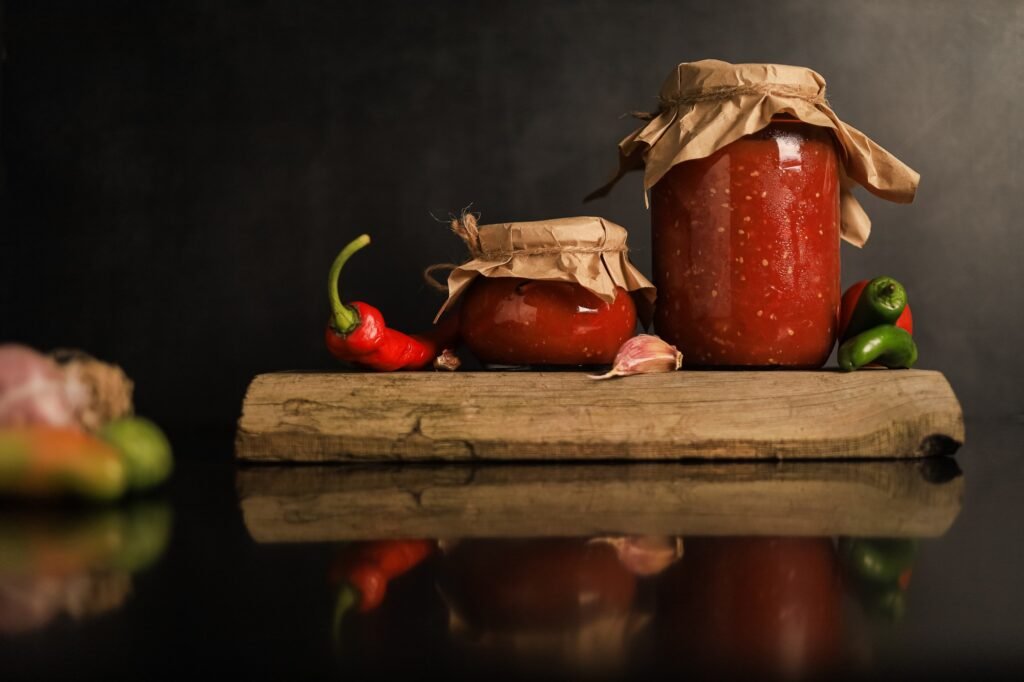1. Flavor Development: The Science of Concentration
Canned tomato sauce undergoes controlled processing that enhances its natural flavors in ways fresh tomatoes cannot match:
- Umami Amplification: Thermal processing breaks down glutamic acid, increasing savory depth by up to 30% (Journal of Food Science, 2022).
- Caramelization: The “hot break” method (heating to 90°C before crushing) develops richer, sweeter notes through Maillard reactions.
- Acid Balance: Professional-grade canned sauces standardize pH between 4.3-4.6—the ideal range for balancing sweetness and brightness.
Chef’s Secret:
Most Italian restaurants use canned San Marzano tomatoes because their consistent flavor profile outperforms seasonal fresh tomatoes.
2. Nutritional Advantages You Didn’t Expect
Contrary to popular belief, canned tomato sauce delivers superior bioavailability of key nutrients:
| Nutrient | Canned Sauce Advantage | Scientific Basis |
|---|---|---|
| Lycopene | 400% more absorbable | Heat ruptures cell walls (Journal of Nutrition) |
| Vitamin C | 30% better retention | Rapid processing preserves vs. fresh degradation |
| Antioxidants | Higher ORAC score | Concentrated during evaporation |
Note: BPA-free liners in premium cans eliminate concerns about chemical leaching.
3. Culinary Performance: The Texture Factor
Fresh tomatoes suffer from inherent limitations:
- Watery Disintegration: Fresh tomatoes release 30-40% of their weight as liquid when cooked, diluting sauces.
- Inconsistent Texture: Variable ripeness leads to chunks breaking down unevenly.
Canned sauce solves these problems through:
- Pre-sieving: Removes excess seeds and skin for smoother consistency
- Controlled viscosity: Industrial evaporators achieve perfect thickness (measured in Bostwick units)
Pro Tip: For neapolitan pizza, canned tomato puree (passata) prevents soggy crusts better than fresh.
4. The Practicality Revolution
Consider these time-and-money calculations:
Making 2L Marinara Sauce
| Method | Prep Time | Cost | Yield Consistency |
|---|---|---|---|
| Fresh tomatoes | 45 min peeling/seeding | $8.50 | Variable |
| Premium canned | 5 min opening cans | $3.75 | Restaurant-grade every time |
Additional Benefits:
- Year-round availability unaffected by seasons
- No prep waste (cores, skins already removed)
- Emergency-ready with 2-3 year shelf life
5. Sustainability: An Unexpected Win
The carbon footprint comparison surprises many:
- Transport Efficiency: 1 truckload of canned sauce equals 3 truckloads of fresh tomatoes.
- Zero Waste Processing: Cannery byproducts become livestock feed (skins) and biofuel (seeds).
- Reduced Home Energy: 90-minute fresh tomato reduction vs. 10-minute canned sauce heating.
When Fresh Tomatoes Actually Win
There are still cases where fresh prevails:
- Caprese salad (texture showcase)
- Heirloom tomato season (August-September peak)
- Ultra-high-end restaurants with daily farm deliveries
But for 90% of cooking applications—especially soups, stews, and sauces—canned is the smarter choice.
Conclusion: The Modern Cook’s Secret Weapon
Today’s premium canned tomato sauces represent the pinnacle of food technology meeting culinary tradition. They deliver concentrated flavor, enhanced nutrition, and remarkable consistency that fresh tomatoes simply can’t match for most cooked applications.
Next time you reach for that can of tomatoes, remember: you’re not taking a shortcut—you’re choosing a scientifically superior ingredient.

_画板-1-scaled-1-e1753069611495-300x238.png)
_画板-1-scaled-1-e1753069611495-r92g6ranye9uox3dh6vr3oda8no8cia2ellx6xvoug.png)